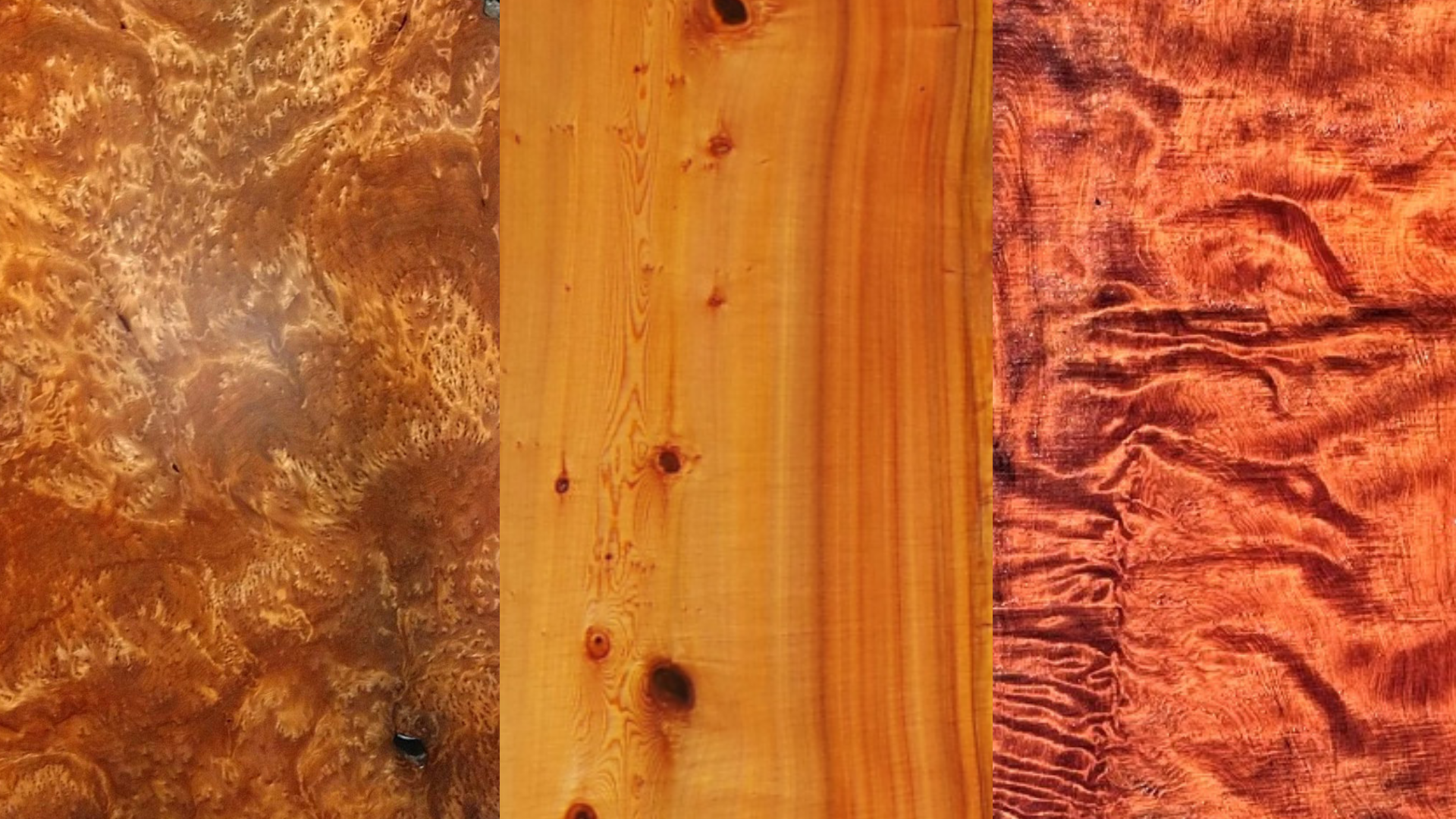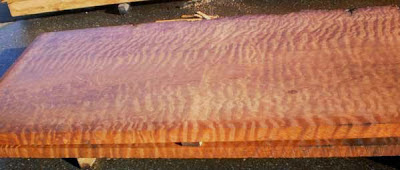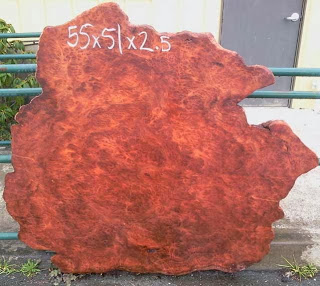
Today I am writing about some of the different grain characteristics found in the redwood we have available here at Redwood Burl Inc.
First off, we have our tree slabs. These are usually cut from the main trunk of the tree. Some are really straight-grained slabs. These come from the lower end of the tree where there are no branches or anything to take away from the grain. So, these usually make great counters & bar tops.

Curly Slabs
Curly slabs tend to have a little more character. This is because they have a waviness, or what we call curl, in the grain. However, the curl in the grain does not always extend across the entire slab. It is considered a rare find when you discover one that does. So, this is why curly slabs fetch a premium. However, it is this rarity and uniqueness that makes your project look all that much better.

Curl is usually caused by a bend in the tree. When a tree grows on the side of a mountain, it will straighten out. This causes compression grain or what we call “strain grain”. Because of this, when loggers were high grading redwood lumber for the mills in the old days, lumber companies considered this wood unsuitable for making lumber. Therefore, loggers just left pieces in the woods to rot. It is true that this type of grain is not structurally sound for building homes and such, but it sure makes great furniture.
Burl Wood
Burl is another irregular growth that occurs in the trees. The types of burl that are seen in the grain patterns vary depending on the type of irregularity. There is a plain burl, what is known as a bird’s eye burl, and a lace burl. Again, these are rarities. Most burl is found in the root areas that were below ground. We actually get a lot of root balls coming into our facility. Redwood has a very narrow root system. This is why they are notorious for falling over in the wind. I’ve heard these trees fall on windy nights. The sound carries through the valleys for miles in the wind.

Tags: burl wood, reclaimed redwood, redwood burl, sustainable materials
